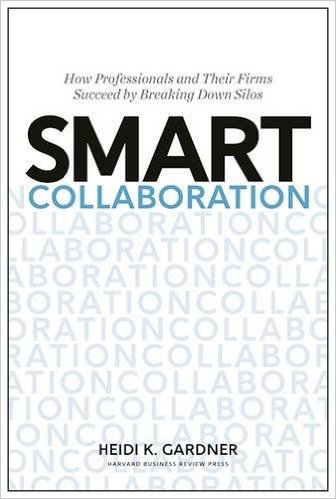Teamwork has been pushed as the corner stone of a successful organization for long. Organizations that have smoothly and efficiently functioning teams are known to get more from their employees and advance better than their competitors. Heidi Gardner, during her time at McKinsey and Company observed that their teams did not function well all the time. They could solve some problems with ease, while struggled to solve many others. This brought her back to academia and once again frame the question that had bothered her earlier during her Masters. In Smart Collaboration, the author presents a business case for collaboration and suggests how organizational leaders can foster collaboration and boost profits.
Heidi K. Gardner is a Distinguished Fellow at Harvard Law School’s Center on the Legal Profession, where she serves as a Lecturer on Law and Faculty Chair of the Accelerated Leadership Program. She was previously a Harvard Business School professor, McKinsey consultant, and Fulbright scholar.
Smart Collaboration: How Professionals and Their Firms Succeed by Breaking Down Silos
Author: Heidi K. Gardner
Hardcover: 272 pages
Publisher: Harvard Business Review Press (January 3, 2017)
ISBN-10: 1633691101, 978-1633691100
Smart Collaboration Summary
Although the book works around legal professionals, there is a lot that can be used by other professional services firms. From technology consultants who work in online security, by those in work in web design, or by professional services companies that provide Marketing services.
With globalization, most organizations have teams distributed across the world. Many of the team-mates in these cases come form different organizations, but must work on the same complex problem. And the more talented experts you have from different areas, the more difficult it gets to break down the silos and make them work together. And they have to work together. With technology intersecting with every aspect of business, strategy cannot be formulated without technical inputs, and marketing cannot work without inputs from production.
Author believes that true collaboration happens when the whole is greater than just the sum of its parts. She points out that collaboration does not end by picking different experts and putting them in a room. Smart Collaboration begins when you partner with the right firms – firms that complement your expertise – and help you provide a complete solution to your client.
Most part of the book talks in terms of Partners in legal firms. But these could easily be Business Units of a services firms that provides services across different domains and areas. The author argues that there is only as much you can squeeze out of one person or unit. But combining expertise of multiple teams, the firm can service more clients, whose needs span different areas of service.
The author points out various trends in consulting business that show how collaboration is becoming increasingly important to retain clients and find new ones. With new developments happening at an accelerated pace, being an expert and a specialist has become the only way to success. But as everyone scrambles to become an expert in one thing, collaboration to find solution to complex problems becomes inevitable.
She goes on to place each employee on a spectrum, from what she calls a solo specialist to the Ringmaster. Each type gets a dedicated chapter where the author discusses the mindset of these contributors. For example a solo specialist might not be interested in getting information or hearing about problems from peers in other department, while a Contributor usually feels safe in routine works and is just not interested in new challenges. Each of these put a unique challenge to collaboration.
In the later chapters, the author investigates how the advice in this book, though more suitable for professional services firms, can apply to many other businesses such as large hospitals, management consultants, and in Academia, where collaboration is the key to solving complex problems.
Smart Collaboration Webinar by Heidi Gardner
The author shares some research findings and discusses collaboration challenges discussed in her book.
